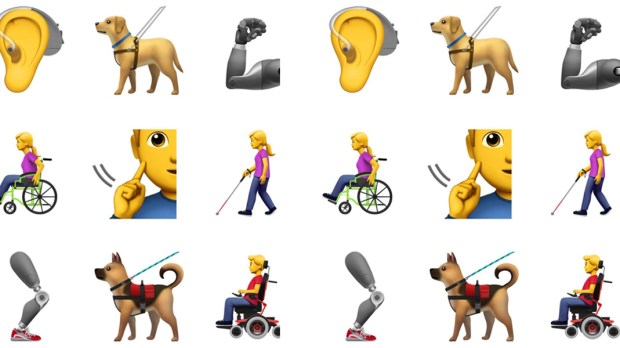Lenten Campaign 2025
This content is free of charge, as are all our articles.
Support us with a donation that is tax-deductible and enable us to continue to reach millions of readers.
There’s an emoji for everything … or so we thought. The use of emojis to communicate about our lives and experiences has become so embedded in our culture in recent years that it has also become a new battleground for advocacy, with many taking advantage of the opportunity to increase diversity awareness.
Previous successes for diversity have included the new breastfeeding emoji, as well as one depicting a woman in a hijab. Now, Apple has submitted a proposal for inclusivity toward disabilities. The new emojis feature service dogs, hearing aids, and mobility aids, including both manual and mechanized wheelchairs.
Accessibility emojis could be coming to your phone next year, including a prosthetic arms, a guide dog and hearing aids. https://t.co/fatS7u1aRL
— Twitter Moments (@TwitterMoments) March 23, 2018
“Adding emojis emblematic to users’ life experiences helps foster a diverse culture that is inclusive of disability,” the proposal explained. Though some advocates may be quick to question how this will affect those with invisible disabilities, suggestions to solve this problem are already on the table.
A service dog emoji has been proposed to represent seizure disorders, PTSD, autism, and more. Though many are unaware that service dogs can help people with these kinds of disabilities, this decision could help increase awareness and understanding.
A service dog emoji is proposed to represent "hidden disabilities" such as Autism, seizures, anxiety, or PTSD. Per the proposal: "service dogs not only perform tasks to help their partners live independent lives, but may represent a lifeline in moments of crisis" pic.twitter.com/S3DpmVFe4j
— Emojipedia (@Emojipedia) March 24, 2018
The emojis have been developed through the cooperation of various disability advocacy groups such as American Council of the Blind, the Cerebral Palsy Foundation, and the National Association of the Deaf. It appears significant measures have been taken to ensure that the images are respectful and inclusive toward the diversity that exists within these communities, as well. And the increased awareness will hopefully spark more conversations and education surrounding all types of disabilities.

Read more:
Is the “prayer hands” emoji really a “high-five”?

